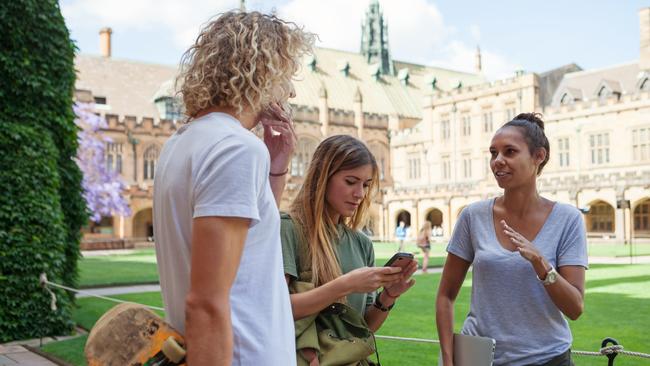Unis rely on international students for growth
The number of domestic students starting courses in Australian universities is falling.

The number of students starting courses in Australian universities grew by 2.3 per cent last year compared with the previous year, the latest federal government data shows, but the growth is being supported by international students.
Figures for domestic students only show that the number of commencing students fell by 1.3 per cent last year.
The data, released on Monday, also showed that the number of students starting bachelor degree courses last year was 1.1 per cent down on 2017.
The student cohort that commenced bachelor courses last year was the first to be affected by the federal government decision in December 2017 to freeze funding for bachelor degrees, meaning universities would have to bear the cost of any increase in student numbers in 2018.
However, the freeze is unlikely to be solely responsible for the drop in commencing domestic students in 2018, because the number of domestic students starting bachelor courses also fell in 2017 (down 0.3 per cent), indicating that demand for undergraduate study had topped out before the government-imposed funding cap.
The percentage changes quoted are not for actual numbers of students but for what is known as the “equivalent full-time student load” or EFTSL, which gives the best comparison of student numbers because it combines the fractional study load of part-time students into the full-time equivalent.
The latest data also shows that demand from domestic students for masters by coursework degrees — which are lucrative for universities because most have high fees — picked up in 2018 after falling the previous year.
In 2017, the number of domestic students commencing masters by coursework degrees fell by 3.4 per cent compared with the previous year. However, last year it rose by 2.5 per cent.
The new higher-education statistical data also shows that the student attrition rate has worsened, falling to 14.93 per cent in 2017 from 14.32 per cent the previous year. The attrition rate is measured as the percentage of first-year students who do not return the following year.
Universities with a notable worsening in their attrition rate compared with the previous year include Macquarie (8.98 per cent to 10.44 per cent), Southern Cross (23.37 to 25.54 per cent), Wollongong (12.22 to 14.1 per cent), La Trobe (14.38 to 16.96 per cent), Bond (5.47 to 8.59 per cent), Sunshine Coast (19.17 to 22.3 per cent) and Tasmania (22.06 to 25.95 per cent).
Universities that improved their attrition rate include Western Sydney, which moved from 13.21 per cent in 2016 to 11.66 per cent in 2017.
The new data also shows a decline in numbers of domestic students commencing doctoral research degrees (down 2.9 per cent) and masters by research degrees (down 8.7 per cent) in 2018.
The total domestic load at universities (for all enrolled students) fell marginally by 0.1 per cent last year, but for all students was up 3.5 per cent, illustrating that Australian universities are only growing because of increased international students numbers.
Last year, 1,562,520 students (including international students and those studying part-time) were enrolled in higher education.




To join the conversation, please log in. Don't have an account? Register
Join the conversation, you are commenting as Logout